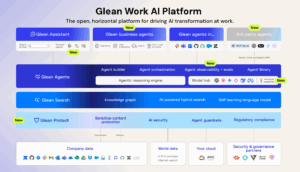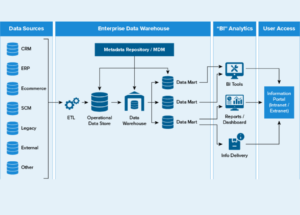Ignoring AI is one thing. But if you ignore the importance of a shared vision and learning culture, all the AI in the world won’t put your organization in the winner’s circle.
By Bryan Kirschner, Vice President, Strategy at DataStax
Consumers love smart personalization. Developers get fired up about building AI-powered apps. And just two months after ChatGPT launched, 100 million people have added tapping into the power of AI to their toolbox.
These signals point toward an “AI everywhere” future: one in which it’s a competency of every firm, and a sidekick (or “co-pilot,” in Microsoft’s lexicon) to every worker.
“Cognitive capital” refers to the stock of knowledge, skills, and abilities that individuals use to create economic value. As humans gain more access to and facility with AI, and as organizations master using AI to equip people with greater immediacy, scope, and scale of knowledge than ever before, we’re on the threshold of a massive increase in cognitive capital.
Progressing down that path is table stakes for companies that want to remain relevant. However, the speed of delivering new use cases or the size of the data estate isn’t enough to realize the promise of AI. There’s a lot more that’s required to separate tomorrow’s AI winners from losers.
How organizations ‘recreate the world’
Cognitive capital is a subset of intellectual capital. The latter is a broad concept that also includes other types of intangible assets that organizations possess, such as patents, trademarks, customer relationships, and organizational culture.
Organizations that build a learning culture excel at building more and deeper customer relationships, because they internalize an insight offered in a 1991 Harvard Business Review article by Ikujiro Nonaka:
“A company is not a machine but a living organism. Much like an individual, it can have a collective sense of identity and fundamental purpose. This is the organizational equivalent of self-knowledge—a shared understanding of what the company stands for, where it is going, what kind of world it wants to live in, and, most important, how to make that world a reality.”
In these companies, the North Star for value creation is “to re-create the world according to a particular vision or ideal.” While modern AI expands the toolset for achieving this, other tools—such as slogans, metaphors, and symbols—may be “low tech,” but they’re equally indispensable for innovation that moves the needle.
We can already see the power and promise of getting this right.
Target’s affordable joy
Target is a power user of best-of-breed technologies for real-time AI (such as Apache Cassandra). The company is all in on AI, as this Forbes article posits:
“Target can now use artificial intelligence (AI) to recommend products based on searches, to aid demand forecasting and ordering and all along the supply chain. AI is used for workload planning, assortment planning, pricing and promotion of products. It is also used for smaller initiatives such as investigating the quality of imagery that the company puts on the website, or to correct errors in item set up.”
But metaphors and slogans are actually the tell behind their winning ways. “Joy” was mentioned 10 times in the company’s Q4 2022 earnings call. Specifically, “affordable joy” is a concept that has been a unique and key differentiator for Target for decades.
In the transcript, executives offer the metaphor of making interactions a “destination, not just a means to an end.” They promise to offer “inspiration.”
AI success requires leadership
As customer expectations rise, every company in every industry will have little choice but to deploy more AI use cases (in ecommerce, for example, real-time substitution recommendations for items that are out of stock). But those that motivate their people with a strong vision will make the most of AI tools and new AI capabilities–because they’ll ask questions and imagine states of the world and new directions for customer relationships to evolve that other organizations can’t.
Today, ChatGPT can give you a serviceable, 9-point answer to the prompt “How might a retailer build a $1B annual revenue private label brand?” Target has done it successfully 10 times (and trademarked each one along the way).
The popular AI tool’s answer to “How can a retailer create an affordable, joyful shopping experience for middle-class midwestern moms?” was pretty good, too. But there’s no AI-powered playbook for turning “shopping of necessity on a budget” into “show us your Tarzhay with enthusiasm.”
If you want to lose, ignore AI. But if you want to lose with AI, neglect the proven power of employees motivated by a shared vision, in a learning culture. Only human leadership can create that.
Learn how DataStax enables real-time AI.
About Bryan Kirschner:
Bryan is Vice President, Strategy at DataStax. For more than 20 years he has helped large organizations build and execute strategy when they are seeking new ways forward and a future materially different from their past. He specializes in removing fear, uncertainty, and doubt from strategic decision-making through empirical data and market sensing.




